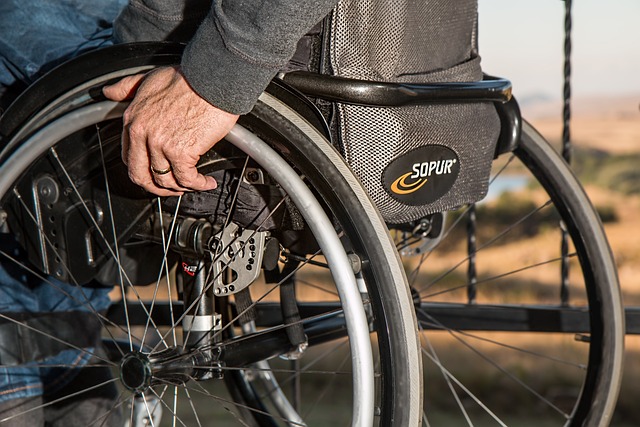Steps to arrange in-home assistance and errand services for elders
Planning in-home assistance and errand services for an elderly family member involves practical steps that balance independence, safety, and wellbeing. This overview outlines how to assess needs, identify local services, organize transport and appointments, and coordinate companionship and daily logistics.

Arranging in-home assistance and errand support for older adults begins with a clear assessment of needs and preferences, then moves into practical planning and coordination. Start by observing daily routines and discussing priorities with the elder and family members. Note mobility limits, medication schedules, social needs, and any upcoming relocation or transitions that require extra support. Keep a simple inventory of tasks that need doing regularly—transport to appointments, grocery runs, home maintenance, and companionship—and prioritize them by frequency and safety risk. This initial step helps guide decisions about whether short-term errand help, regular caregiving, or a blended inhome service is most appropriate.
This article is for informational purposes only and should not be considered medical advice. Please consult a qualified healthcare professional for personalized guidance and treatment.
How to assess needs for seniors and eldercare services
A structured needs assessment clarifies what types of support are required and how often. Use checklists to capture physical mobility, cognitive status, medication management, nutrition, and household tasks. Ask about preferences related to independence and companionship—some elders value maintaining routines, while others prioritize social contact. Involving a trusted clinician, social worker, or case manager can provide objective insight for eldercare planning. Documenting needs supports effective communication with providers and helps match services that respect both independence and safety.
What caregiving tasks can a concierge manage
Senior concierge or inhome assistance often covers non-medical caregiving tasks: light housekeeping, meal preparation, medication reminders, errand running, and scheduling. These services complement medical caregiving by addressing daily logistics that influence wellbeing. When evaluating providers, clarify the scope of tasks they perform and whether they coordinate with formal caregiving or clinical teams. Clear task lists and expectations minimize overlap and ensure that essential needs—like transport to medical appointments or help with relocation planning—are handled reliably.
How to plan logistics, relocation, and mobility support
Planning logistics involves mapping routines, identifying mobility limitations, and preparing for any relocation needs. For elders with mobility challenges, assess home accessibility (ramps, grab bars, bathroom modifications) and consider hiring professionals for modifications. If relocation is planned, break the process into stages—sorting, packing, moving, and settling—and assign roles for each stage. Local services can assist with heavy-lifting and logistics; ensure background checks and references are verified. A written timeline and a checklist for relocation steps help maintain continuity of care and reduce stress.
How to arrange transport and appointments
Coordinating transport and appointments requires reliable scheduling and a backup plan. Compile an appointments calendar with contact numbers, transport preferences, and mobility requirements (wheelchair access, walking aids). Explore local transport options: community shuttle services, accessible ride programs, volunteer driver networks, or private transport providers that accommodate mobility aids. When scheduling, allow extra time for transfers and post-appointment recovery. If a caregiver or concierge accompanies the elder, confirm whether they can assist with check-ins and follow-up logistics after appointments.
How to coordinate companionship, inhome wellbeing, and independence
Companionship is central to mental and emotional wellbeing. Arrange for regular visits that combine social interaction with practical support—shared meals, light exercise, or hobbies that fit the elder’s interests. Encourage activities that preserve independence: adaptive equipment, simplified household layouts, and routines that foster self-sufficiency. When selecting companions or aides, review screening processes, training on dementia or mobility needs, and compatibility with the elder’s personality. Combining companionship with task-oriented support enhances overall quality of life and reduces isolation.
What safety, planning, and errands systems should be set up
Establish systems for safety and routine errands to prevent lapses. Create a master list of errands—prescriptions, groceries, bill payments—and assign frequency and preferred vendors. Set up medication organizers and alert systems as needed. For safety, ensure emergency contacts are visible, install simple monitoring like motion-activated lights or personal alert devices if appropriate, and develop a written emergency plan. Clear communication among family, service providers, and healthcare professionals—using shared notes or a centralized app—streamlines logistics and avoids miscommunication.
Conclusion
A stepwise approach—assessing needs, selecting appropriate non-medical caregiving tasks, planning logistics for mobility and relocation, arranging transport and appointments, fostering companionship, and establishing safety and errand systems—helps elders maintain independence and wellbeing at home. Thoughtful documentation, regular review of services, and open communication with providers and family members keep arrangements aligned with changing needs and safety considerations.






